In 1996, Intel and the English Heritage foundation sponsored a virtual reality simulation of Stonehenge build with WorldToolkit.

According to Robert Stone’s YouTube post, this was “the first ever Virtual Stonehenge demo created for English Heritage and presented by the late Sir Patrick Moore at the 1996 Summer Solstice (June) at the London Planetarium”, while a subsequent post noted this was “merely to publicize Intel’s Pentium Pro-based TDZ/GLZ Workstations”
From what I can tell from examining the various datafile included in the demo, a lot of attention was paid to recreating the star fields above the ancient monument along with the sunrise…all intrinsic elements of the monument.
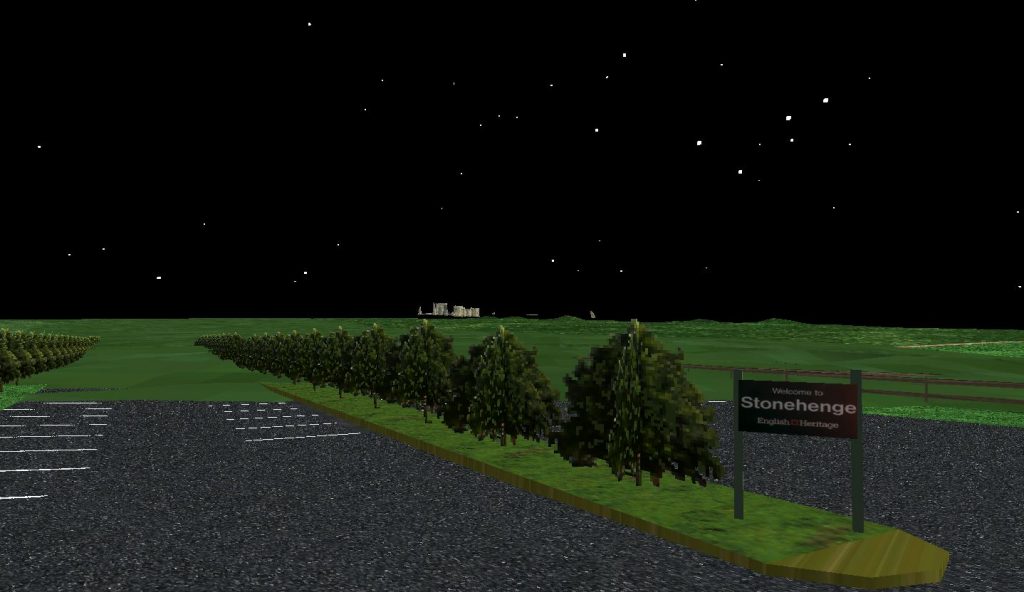
Getting the application to work again was pretty challenging. Many of the file locations were hardcoded to specific directories. I actually needed to use a hex editor on the executable to find some of these locations. And while the monument was modeled with 4 “levels of detail” for some reason, as I approached the monolith, the stones would mysteriously disappear.
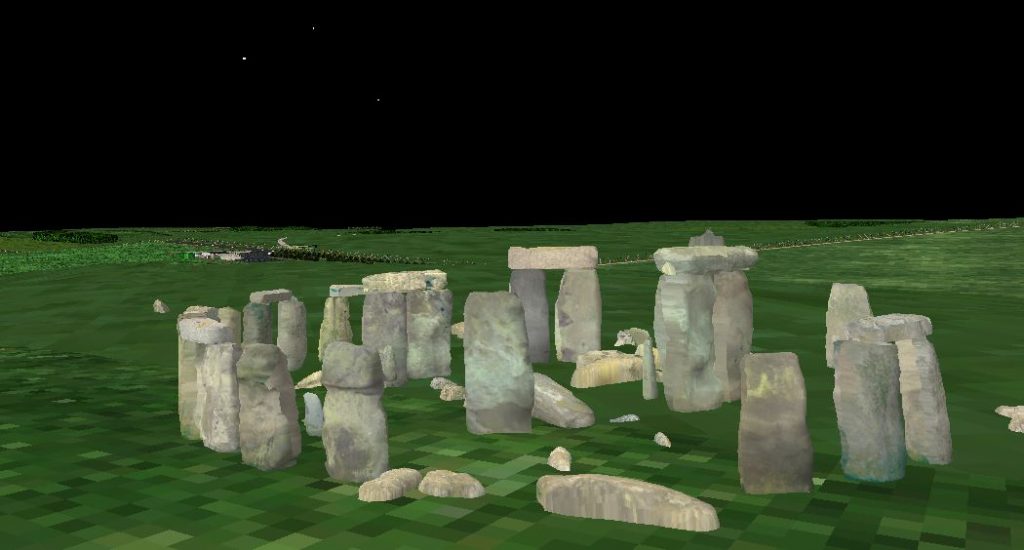
And while I have always been fascinated by Stonehenge, what really intrigues me about this model is the recreation of the Visitor Center. Access to the monument has been greatly curtailed. While the monument has remained the same for centuries, the visitor center from 1996 is long gone, replaced sometime in 2013.
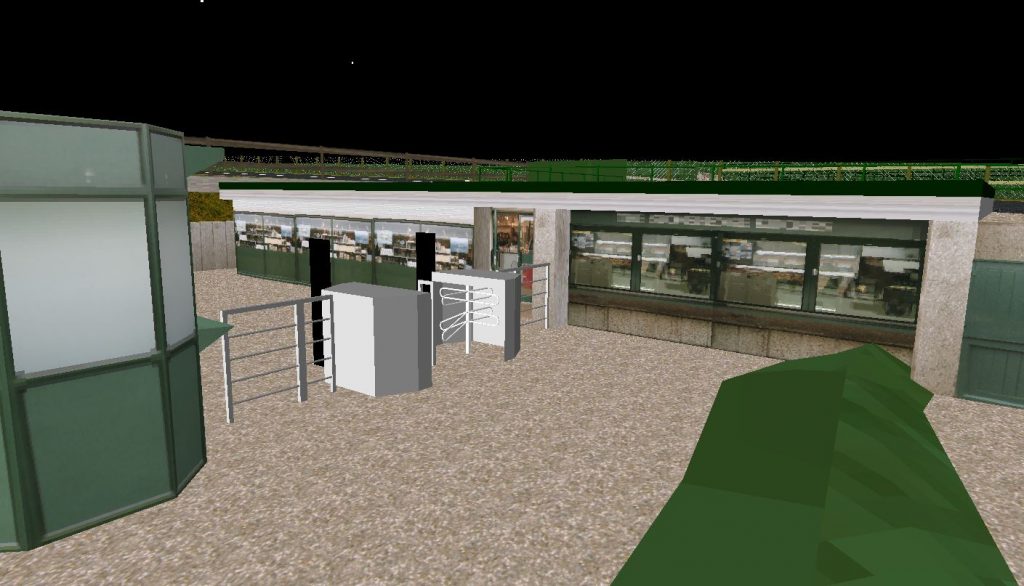
I am not sure if these turnstiles are from this picture, but since you are no longer allowed to physically approach the stones, I am certain they have been permanently removed.

The simulation includes a model of walkway/ramp the allowed visitors to safely walk under the nearby A360 motorway. It includes an image of the complete monument while the recreation could be seen in the distance.
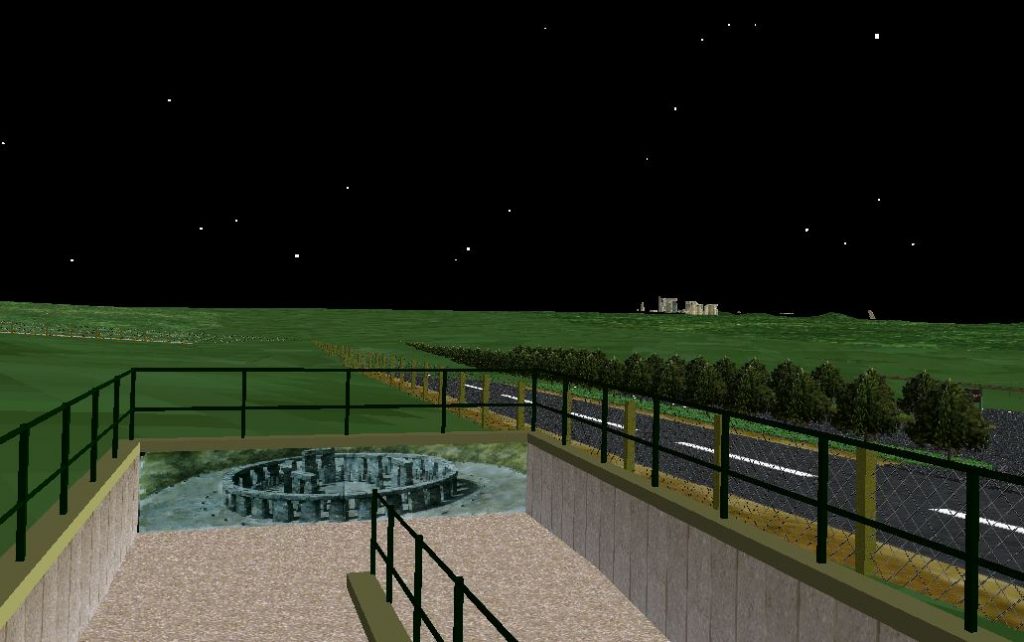
UPDATE
According to Professor Bob Stone, creator of the experience, while primarily educational, part of the reason for the project was to explore the idea of removing the old Visitor Center.
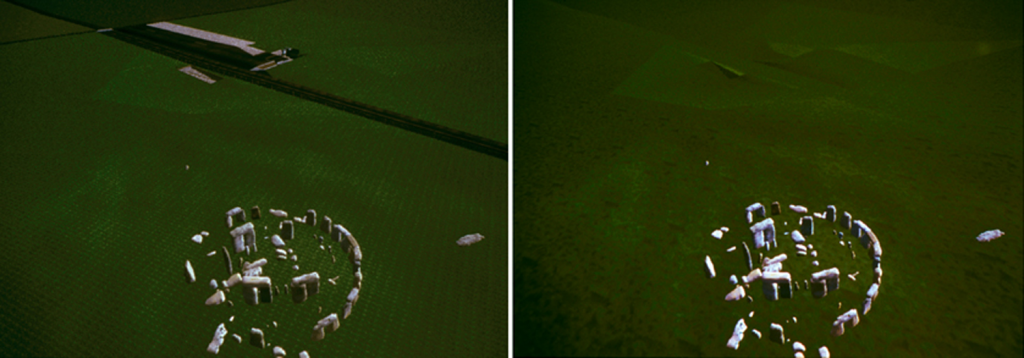

The Players:
- Prof Bob Stone – “Yep, I led this project with the VR Solutions/Virtual Presence lot, liaising with English Heritage to get the stone circle and historical elements right (before it was hijacked by Intel to show off their Pentium Pro chipset). Still have the project details, images and grainy video of the project too!”
- Andrew Connell – “That was one of the last Sense8 apps I wrote myself. I remember late night hacking to get the sunrise and star effects working for the planetarium launch. We used the phrase ‘mathematically accurate’ on the press info at the time, but mostly I just fiddled with it until I liked the effect!
But it was an acheivement to get it all working back in 95 using laser scan models and decent resolution unique image sets for every stone.” - Glenn Johnson – “recall ‘starting’ to work on those cloud meshes for Andrew Connell. Not enough hours in the day :)”

Some comments from Prof Bob Stone (https://www.linkedin.com/in/prof-bob-stone-21b86918/)
“The event at the London Planetarium with the late, great Sir Patrick Moore, was fun, especially the use of an unconvincing grass smell! We’ve “done” two other VR Stonehenges since, using the original CryEngine and Unity. We were able to get some of the historic details in that we were unable to implement before!”
“The whole aim behind Virtual Stonehenge was to show how VR could be used to inform people about the monument/stones and the wider site (Avenue, Cursus, Barrows, etc), either before they visited, or if they were unable to visit. One particular example was Sir Christopher Wren’s (he of St Paul’s Cathedral fame) “graffiti”! We did that in later versions. Also, EH asked for two versions, one with that dreadful visitor centre in place and one without. At that time, the concept of moving the centre was still in its early days, as were plans to build a tunnel to remove the A303 Road from view.”